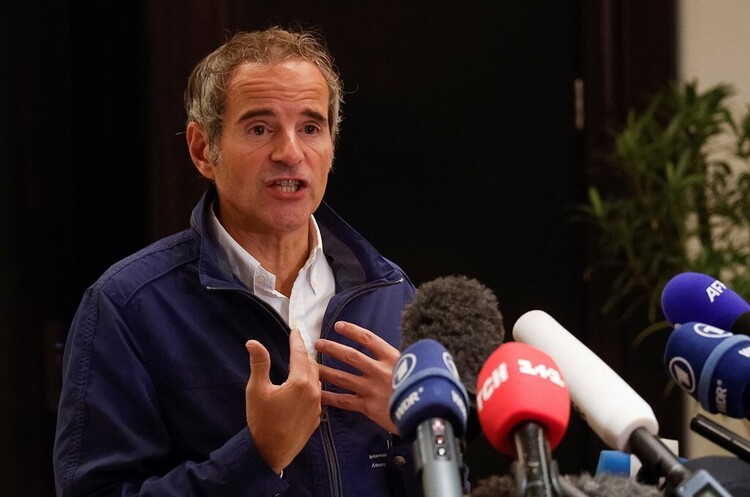IAEA refuses to create a security zone around Zaporizhzhya NPP
Attempts to create a demilitarized zone lasted 8 months

Rafael Grossi, Director General of the International Atomic Energy Agency (IAEA), said that the creation of a demilitarization zone around the Zaporizhzhya NPP is no longer being discussed.
Source. The head of the UN agency said this in his speech at a seminar at the American Non-Governmental Council on Foreign Relations.
According to the head of the IAEA, this issue is no longer being considered, as there are problems with the implementation of this process.
"We are well aware of the additional difficulties this will bring, especially in the area of active hostilities. It will be extremely difficult to carry out the verification process – more than one mile from the demilitarized zone, the territory will be extremely militarized. So we are no longer considering it," Grossi said.
Grossi also said that if a demilitarized zone was created around the ZNPP, the organization's actions could be interpreted as "legitimizing" the presence of Russian troops.
He said that there were different options for a demilitarized zone. These different options were negotiated for 7-8 months.
"We discussed with both sides different sizes, shapes and distances. And I came to the conclusion that territoriality would be something that, for various reasons, could also be seen by Ukrainians as legitimizing the Russian presence," Grossi said.
The IAEA Director General clarified that the organization will now focus its efforts on the safety of the plant. According to him, it is important that ZNPP is not attacked or its territory is not used for military operations.
Background. In February, Energy Minister Herman Halushchenko said that the Russians who are at ZNPP are deliberately operating the equipment in such a way that Ukraine will not be able to connect it to the grid in the future.
In addition, the situation at the plant is deteriorating due to the lowering of the water level in the Kakhovka reservoir caused by the Russians. The lack of water in the cooling pools at ZNPP could lead to overheating of the fuel in the reactor, which could cause it to melt and, as a result, radiation emissions.
In early March, Rafael Grossi said that a group of IAEA experts had rotated at the Zaporizhzhia nuclear power plant.
If you have read this article to the end, we hope that means it was useful for you.
We work to ensure that our journalistic and analytical work is of high quality, and we strive to perform it as competently as possible. This also requires financial independence. Support us for only UAH 196 per month.
Become a Mind subscriber for just USD 5 per month and support the development of independent business journalism!
You can unsubscribe at any time in your LIQPAY account or by sending us an email: [email protected]



